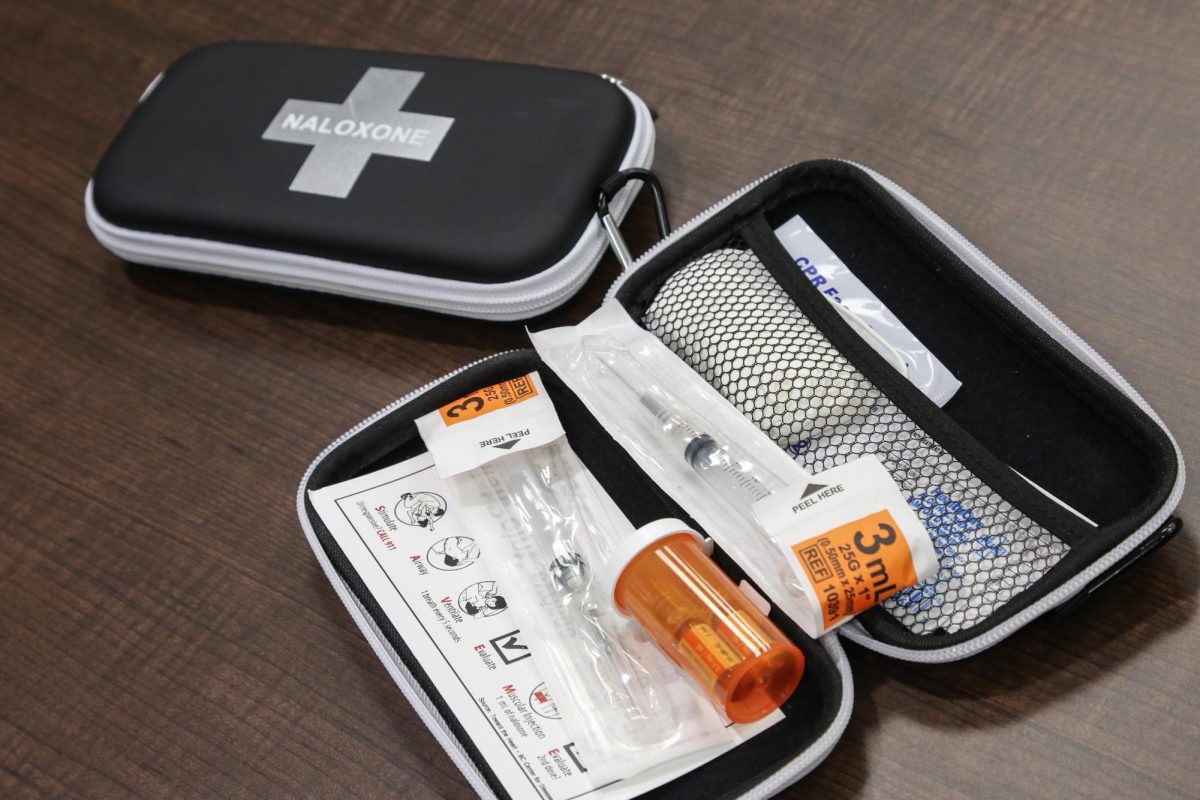The debate around harm reduction is characterized by staunch opposition advocating for the continued incarceration of individuals who use drugs. Rachel Thomas, president of the club End Overdose, is driven to enhance awareness and education surrounding harm reduction principles.
“The fact that harm reduction has such promising results for helping people get through that is definitely one of my main drives,” Thomas, a senior anthropology and psychology major, said.
Pitt’s End Overdose club was established this year with the mission of curbing drug-related overdose deaths through a combination of campus education initiatives and medical interventions. Elin McLaughlin, a senior neuroscience major, said the club has multiple initiatives to address harm reduction measures on campus.
“I think the biggest overall one would be kind of equipping people with the knowledge and tools for recognizing and responding to overdoses, because those things aren’t always completely accessible to people, especially Narcan and things like that,” McLaughlin said.
Harm reduction is an approach that involves engaging with individuals who use drugs, providing them with essential tools like Naloxone — more commonly known as Narcan, which is an antidote to opioid overdoses — and offering valuable information. This strategy aims to foster safer and more supportive environments, ultimately serving to potentially save the lives of people who use drugs.
The Pennsylvania House Judiciary Committee voted in favor of House Bill 1245 on Feb. 14, proposing the legislation of syringe services programs throughout Pennsylvania, with authorization limited to Pittsburgh and Philadelphia as the sole cities permitted to operate such harm reduction programs. The escalating focus on harm reduction policies propelled members of End Overdose to amplify awareness efforts on campus and create the club.
Thomas said the club has not explicitly faced negativity on campus since its creation.
“It’s such a polarizing option,” Thomas said. “We’ve thankfully been met with a lot of the positives of it, but I think destigmatizing being such a large part of our campaign, we can only talk so much to people to get them to understand our platform. Ultimately, their agreement comes from their own self, and we can only educate as much as we possibly can.”
According to the Center for Disease Control, Pennsylvania holds one of the highest overdose death rates associated with xylazine, an animal tranquilizer increasingly combined with drugs like heroin. Since January 2021, Pittsburgh has recorded 1,590 overdoses. However, this figure likely underestimates the true extent of the issue, as it only accounts for cases where 911 was called.
McLaughlin said the End Overdose organization taught her about harm reduction efforts. She said her experience with the overall organization motivated her to start and join the Pitt chapter.
“I didn’t even know what harm reduction was until a few years ago,” McLaughlin said. “I started following End Overdose, like their main headquarters, but they were a big organization that I thought was super cool for reaching a lot of people about harm reduction.”
Thomas said the first club meeting is scheduled for Feb. 29, during which students will receive training on administering Narcan and will be provided with Narcan for personal use. She said the meeting will also include education on pertinent laws, such as the Good Samaritan Law, ensuring that students are well informed about their rights in relevant situations.
“We actually do have naloxone kits where we’re handing out the generic brand and brand name of Narcan,” Thomas said. “The most important part is that it is the intranasal version and not the intramuscular.”
Stacy Cremer, who joined End Overdose because of her interest in community service and harm reduction, said harm reduction is a realistic response to the inevitability of drug use on campus and in the greater Pittsburgh community.
“The fact of the matter is that drug use is going to happen,” Cremer, a senior psychology and computer science major, said. “People are going to do that, and we can accept that as a fact of life and equip people with the tools they need to be as safe as possible to help other people in their community.”


